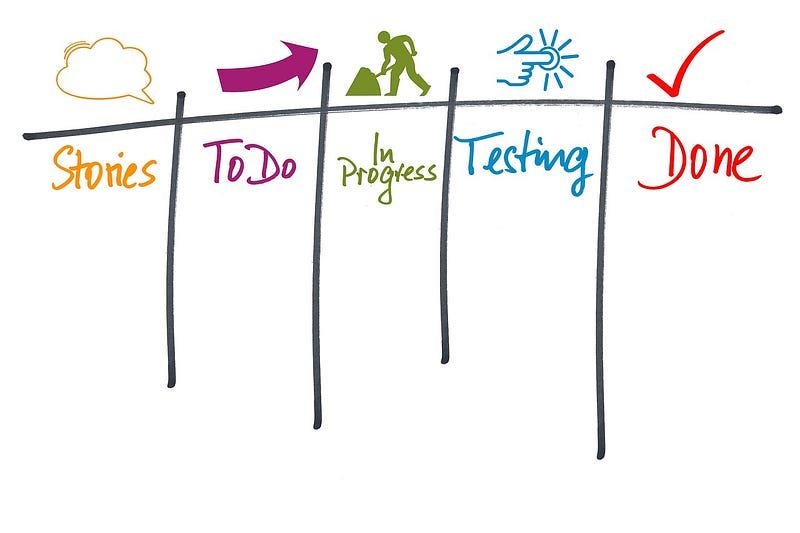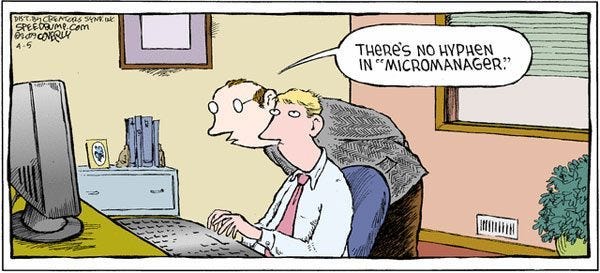17 ideas from Lean & Agile to make Remote Work better
How might we make remote work work better and mitigate its adverse effects? Let’s turn to Lean and Agile principles for insights.

According to the leading expert on remote work, Stanford professor Nicholas Bloom, working from home can be as productive as working from the office, if not more. Collaborative platforms enabling remote work such as Microsoft Teams can really make an economic difference and bring in significant benefits. However, professor Bloom also notes that remote work works best if it’s by choice and not every day.
How might we make remote work work better and mitigate its adverse effects? Let’s turn to Lean and Agile principles for insights.
The Seven Wastes of Lean & Remote Work
In Lean, anything that does not value from a customer perspective is a waste. The seven wastes are:
Here are just some ideas on what we can do to eliminate waste from remote work.
Waiting for the items or information to arrive
1) Make the work visible — use shared to-do’s based on the kanban board which has many benefits — kanban lets you see at what stage each item is, and where bottlenecks are. Additionally, by adding a limit for work in progress (one of the Kanban principles), you make work flow faster. Here are some Kanban board examples to get you started. Microsoft Planner or Trello are just two of many tools available.
2) Set regular check-ins with teams, colleagues and customers — establish cadence and synchronization. Start with 15 minutes with an immediate team daily for alignment, setup weeklies, bi-weeklies with other stakeholders to better absorb unexpected work and minimize waiting time, especially for reviews and approvals. This matrix will help you decide on the frequency for each
Transportation — unnecessary movement of items or information between steps
3) Single-task whenever possible — context switching is terrible for productivity. Don’t multitask to get more things done faster. Sometimes this means saying “No, not right now” for new work (as per WIP limits). Sometimes it means minimizing distractions, or maximizing blocks of time of uninterrupted work.
4) Block your calendar for deep work to minimize opportunities for distractions, or have your schedule accommodate your family. Cal Newport wrote a whole book on “Deep Work” — the ability to focus without distraction on a cognitively demanding task. It’s a skill that allows you to quickly master complicated information and produce better results in less time.” This is especially relevant if you work on a maker schedule. For more insights on making the calendar work watch this talk from Dominica DeGrandis.
Inventory — work in progress, unfinished work
5) Review any work started, but not completed — if you’re waiting for others, follow up. Consider Getting Things Done or other techniques to help you manage the mental load and review the work regularly
6) Remove any unused apps or files — they take up unnecessary space slowing you down
Overproduction — producing more, sooner or faster than necessary
7) Set 15, 30 or 45 min meetings — as per Parkinson’s Law “work expands so as to fill the time available for its completion”. If we have an hour we spend an hour. By taking more than necessary, not only are we not adding more value, but also take it from somebody else who could benefit more. Meetings cost money and you can even check how much here.
Motion — unnecessary movement within a process
8) Even better than shorter meetings, don’t do them as 63% of them are unnecessary. Find out if an email would do
9) Work on online documents instead of sending attachments. This will make less impact on the connectivity, and ensure everyone is on the same page
10) Better yet, create team folders or workspaces if you haven’t already and keep all the files there. This will reduce effort we spend on finding documents, going from one person and folder to another.
Defects — errors and work not right the first time
11) Peer review your work before releasing — fixing errors in production is exponentially more expensive than in development. Utilize online file sharing and real-time reviews. Better yet, schedule an online meeting and work in pairs for best quality
12) If you run a meeting, make it online with a camera to pick up non-verbal communications, and make your online meeting more effective. Otherwise as in the risk of an email only approach, “not only could we falsely assume that others understand the true intent behind our words, we could also falsely assume that we understand enough about the other people”.
Over-processing — more work or higher quality than is required
13) Look into common activities and seek automation opportunities — you can leverage platforms like Microsoft Flow, IFTTT or Zapier and their integrations with Office365, Google, Slack or Trello for automating to-dos, reviews or testing
Respect for people and culture
Psychological safety is the number one factor behind successful teams as concluded by Google.
Psychological safety refers to an individual’s perception of the consequences of taking an interpersonal risk or a belief that a team is safe for risk taking in the face of being seen as ignorant, incompetent, negative, or disruptive. In a team with high psychological safety, teammates feel safe to take risks around their team members. They feel confident that no one on the team will embarrass or punish anyone else for admitting a mistake, asking a question, or offering a new idea.
Last but not least, when times are challenging for everyone, it goes without saying we need to be even more empathetic than usual.
How might our behaviors help?
14) Don’t email people over the weekend or after hours, or if you do, make it explicit this is only because of your own convenience and personal reasons, not expected behavior.
15) Don’t micromanage — as Scott Berkun writes in his open letter to micromanagers:
Even if you are 30% better at a task than someone who works for you, the time it takes for you to check on them every few hours, and demand approvals over trivial decisions, costs more in lost morale, passion for work, and destruction of self-respect among your staff than the 30% you think you’re adding. No one works well if they feel they are being treated like an idiot child. Having two people involved in work that should only require one wastes everyone’s time.
16) Agree on SMART goals and be flexible with the ways of reaching them — with often extra responsibilities at home, we must be more flexible with how we work — our working hours for one. Flexibility itself is not enough as autonomy without an alignment is chaos. We should agree on clear outcomes we expect from others (for example in the form of SMART Goals or OKRs), and then let people do their job.
17) Organize social video chats — as advised by Nicholas Boom, The key advice is to recreate social contact using video conferencing, two ways. We’re social creatures, and Gallup even has shown a concrete link between having a best friend at work and employee engagement. Forced remote work might be especially tough on the extroverts, who gain energy from social interactions. Don’t forget to fill a void from missing “coffee machine” conversations.









